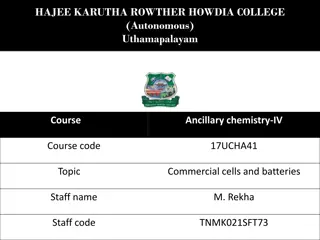Understanding Cells: From Genes to Proteins Post-Test
Explore key concepts in cell biology through a post-test that covers information on genetic inheritance, universal compounds in living organisms, transcription processes, genomic similarities, and nucleic acid functions. Test your knowledge on where genetic information resides in cells, the differences between species despite genetic similarities, and the roles of DNA, mRNA, tRNA, and rRNA in cellular functions.
Download Presentation

Please find below an Image/Link to download the presentation.
The content on the website is provided AS IS for your information and personal use only. It may not be sold, licensed, or shared on other websites without obtaining consent from the author. Download presentation by click this link. If you encounter any issues during the download, it is possible that the publisher has removed the file from their server.
E N D
Presentation Transcript
Life Science Cells Are Us From Genes to Proteins Post-Test
1. Gregor notices he has a mixture of his parents traits while his older sister is more like their father and his younger sister is more like their mother. Where in the cell is the information responsible for these traits? A. In the cytoplasm B. On the surface of the membrane C. On chromosomes in the nucleus D. In the endoplasmic reticulum
2. Which of the following identifies compounds or structures that are found in all living organisms? A. Membrane bound nuclei B. Adenine and cytosine C. Red and white blood cells D. 23 pairs of chromosomes
3. Which of the following best describes the process of transcription? A. A segment of DNA is used as a template to make a strand of complementary RNA with uracil in the place thymine B. A strand of mRNA is matched with tRNA complexes to make a polypeptide chain C. DNA is unzipped into two separate strands and complementary nucleotide bases bind to each strand to make two new strands of DNA D. A segment of mRNA is used as a template to make a strand of DNA with thymine in the place of uracil
Humans and other primates share 98-99% of their genome. Which of the following best explains what causes such large differences between these species? A. The nucleotide base to amino acid code is different between species B. Most of the genes don t do anything at all C. Each species has a different set of 20 amino acids D. Despite sharing many genes, in different species, the same genes are under different regulations
Which of the following matches the nucleic acid to its function? A. DNA - directly produces proteins B. mRNA - carry code for protein production from nucleus to cytoplasm C. tRNA - attach nucleic acids in a chain based on mRNA code D. rRNA - form most of the nuclear membrane























